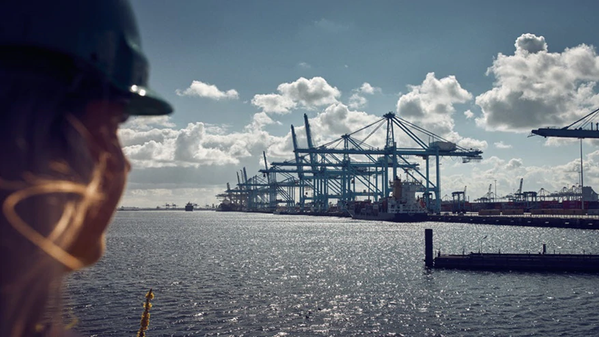
India’s import and export container trade in Q3 2019 (July-September) remained flat as compared to global growth of 1.5%.
The slowdown is aligned closely with the weaker domestic demand, as well as a reflection of the broad-based cyclical weakening of the economic environment in all the main global economies. The negative effects from escalating trade restrictions also weighed on trade growth in the quarter. The trade restrictions have reduced bilateral trade between the United States of America and China, and led to shifts in trade structures, with global importers having shifted sourcing from China to other countries such as Vietnam, Taiwan, Bangladesh and Korea, with Thailand, Mexico and India also showing early signs of being next in line to benefit.
Specifically in India, the economic uncertainty, tight liquidity, decline in global export orders and evolving domestic political scenario also affected the flow of investments and added to currency volatility. While imports into the country witnessed a subdued growth, the overall fiscal impact was nullified by an identical contraction in exports.
India wants to boost trade with China while protecting local interests
China is among the top five import countries for India, however imports have declined. India is looking for greater access to the Chinese market as it seeks to arrest the fall in farm commodity exports. Private companies from India and China signed more than 120 MoUs for export of various products from India, including sugar, chemicals, fish, plastics, pharmaceuticals and fertilizers. However, India has been cautious when it came to the Regional Comprehensive Economic Partnership RECP) unless a deal was offered which would help protect the interests of local businesses and avoid flooding goods from China into the Indian market through third countries.
Steve Felder, Managing Director, Maersk South Asia, said “The current slowdown witnessed in the last two quarters can be accredited to tight liquidity and working capital, weaker domestic consumption patterns and slower global growth. As the global economy continues to face challenges, and trade tensions between major economies ensue, many leading global importers have begun exploring trade alternatives to China. The USA has emerged as a strong trade partner with India showing growth in exports as well as imports. India boosted its 'Ease of Doing Business' in World Bank’s 2020 rankings. This provides a huge opportunity to entice multinationals and global investors to grow their trade with India."
Indian Retail, Apparel & Textile Facing Strong Global Headwinds
The apparel exports are exposed to multiple threats like USA-China trade tension, Brexit uncertainty and almost flat in major EU economies which could slow down the pace and make it challenging for apparel exporters. Though India’s apparel exports have revived during the current financial year, exports aim to grow by 4% Y-o-Y during 2020 after two consecutive years of contraction. India’s textile & apparel industry is facing strong headwinds as key competitors such as Pakistan, Bangladesh and Vietnam are given preferred access in India’s biggest textile market — Northern Europe.
India's Varying Commodity Trade
Dry cargo
Refrigerated cargo (Reefer)
“The Government has ambitious goals of reaching to a USD 5 trillion economy. To achieve this, there has to be a focused approach in implementing reforms and measure to drastically improve the landside infrastructure to boost logistics further and adopt digitalization as rapidly as possible. This will help catalyze the export growth, supported by robust policy reform. In its second term, the Government has a strong focus on procuring FDI inflows, structuring policy reforms and facilitating infrastructure development. Furthermore, an impetus on increasing industrial manufacturing while easing corporate tax structures will further prove to be an advantage to the Indian economy.” Felder concluded.
* Y-o-Y percentage is comparison of Q3 2019 with same period last year i.e. Q3 2018
** Reported data is a combination of market intelligence and Maersk containerised data


